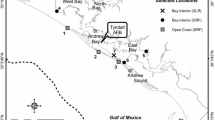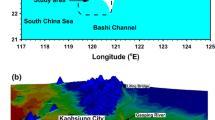Abstract
Combined effects of hurricane wind and surge can pose significant threats to coastal cities. Although current design codes consider the joint occurrence of wind and surge, information on site-specific joint distributions of hurricane wind and surge along the US Coast is still sparse and limited. In this study, joint hazard maps for combined hurricane wind and surge for Charleston, South Carolina (SC), were developed. A stochastic Markov chain hurricane simulation program was utilized to generate 50,000 years of full-track hurricane events. The surface wind speeds and surge heights from individual hurricanes were computed using the Georgiou’s wind field model and the Sea, Lake and Overland Surges from Hurricanes (SLOSH) model, respectively. To validate the accuracy of the SLOSH model, the simulated surge levels were compared to the surge levels calculated by another state-of-the-art storm surge model, ADCIRC (Advanced Circulation), and the actual observed water elevations from historical hurricane events. Good agreements were found between the simulated and observed water elevations. The model surface wind speeds were also compared with the design wind speeds in ASCE 7-10 and were found to agree well with the design values. Using the peak wind speeds and maximum surge heights, the joint hazard surfaces and the joint hazard maps for Charleston, SC, were developed. As part of this study, an interactive computer program, which can be used to obtain the joint wind speed and surge height distributions for any location in terms of latitude and longitude in Charleston area, was created. These joint hazard surfaces and hazard maps can be used in a multi-hazard design or risk assessment framework to consider the combined effects of hurricane wind and surge.


















Similar content being viewed by others
References
American Society of Civil Engineers (ASCE) (2005) Minimum design loads for buildings and other structures (ASCE/SEI 7-05). ASCE, Reston
American Society of Civil Engineers (ASCE) (2006) Flood resistant design and construction (ASCE/SEI 24-05). ASCE, Reston
American Society of Civil Engineers (ASCE) (2010) Minimum design loads for buildings and other structures (ASCE/SEI 7-10). ASCE, Reston
Apivatanagul P, Davidson R, Blanton B, Nozick L (2011) Long-term regional hurricane hazard analysis for wind and storm surge. Coast Eng 58(6):499–509
Applied Technology Council (ATC) (2010) “ATC wind speed by location.” Wind Speed by Location. http://www.atcouncil.org/windspeed 16 Feb 2013
Atlantic Oceanographic and Meteorological Laboratory (AOML) (2012) “Easy to read HURDAT 2012.” Easy to Read HURDAT 2012. http://www.aoml.noaa.gov/hrd/hurdat/easyread-2012.html 18 March 2012
Avila LA, Cangialosi J (2012) Tropical cyclone report: Hurricane Irene, 21–28 August 2011. National Hurricane Center, Miami
Blake ES, Landsea CW, Gibney EJ (2011) The deadliest, costliest and most intense United States tropical cyclones from 1851 to 2010 (and other frequently requested hurricane facts). NOAA Technical Memorandum NWS NHC-6, National Weather Service, National Hurricane Center, Miami
Booij N, Ris RC, Holthuijsen LH (1999) A third-generation wave model for coastal regions, Part I, model description and validation. J Geophys Res 104(C4):7649–7666
Butcher JC (2008) Numerical methods for ordinary differential equations, second edition. Wiley, West Sussex, England
Crossett K, Ache B, Pacheco P, Haber K (2013) National coastal population report: population trends from 1970 to 2020. NOAA State of the Coast Report Series, U.S. Department of Commerce, Washington
Darling RWR (1991) Estimating probabilities of hurricane wind speeds using a large-scale empirical model. J Clim 4(10):1035–1046
Emanuel K, Rotunno R (2011) Self-stratification of tropical cyclone outflow Part I Implications for storm structure. J Atm Sci 68(10):2236–2249
Emanuel K, Ravela S, Vivant E, Risi C (2006) A statistical deterministic approach to hurricane risk assessment. Bull Am Meteorol Soc 87(3):299–314
Federal Emergency Management Agency (FEMA) (2008) Managing floodplain development through the National Flood Insurance Program. FEMA, Washington
Federal Emergency Management Agency (FEMA) (2012a) HAZUS-MH 2.1 hurricane model technical manual. FEMA, Washington
Federal Emergency Management Agency (FEMA) (2012b) HAZUS-MH 2.1 flood model technical manual. FEMA, Washington
Friedland C, Levitan M (2011) Development of a loss-consistent wind and flood damage scale for residential buildings. In Solutions to Coastal Disasters 2011. ASCE, Reston, pp 666–677
Georgiou PN (1985) Design wind speeds in tropical cyclone-prone regions. Ph.D. dissertation, Department of Civil Engineering, University of Western Ontario, London, Ontario
Glahn B, Taylor A, Kurkowski N, Shaffer WA (2009) The role of the SLOSH model in National Weather Service storm surge forecasting. Natl Weather Digest 33(1):3–14
Harper BA, Kepert JD, Ginger JD (2008) Guidelines for converting between various wind averaging periods in tropical cyclone conditions. World Meteorological Organization, Geneva
Houston SH, Shaffer WA, Powell MD, Chen J (1999) Comparisons of HRD and SLOSH surface wind fields in hurricanes: implications for storm surge modeling. Weather Forecast 14(5):671–686
Huang Z, Rosowsky DV, Sparks PR (2001) Hurricane simulation techniques for the evaluation of wind-speeds and expected insurance losses. J Wind Eng Ind Aerodyn 89(7–8):605–617
Irish JL, Resio DT, Ratcliff JJ (2008) The influence of storm size on hurricane surge. J Phys Oceanogr 38(9):2003–2013
Jarvinen BR, Neumann CJ, Davis MAS (1984) A tropical cyclone data tape for the north Atlantic basin, 1886–1983: contents, limitations, and uses. NOAA Technical Memorandum No. HWS NHC 22, U.S. Department of Commerce, Washington
Jelesnianski CP (1967) Numerical computation of storm surges with bottom stress. Mon Weather Rev 95(11):740–756
Jelesnianski CP, Chen J, Shaffer WA (1992) SLOSH: sea, lake, and overland surges from hurricanes. NOAA Technical Report NWS 48, National Weather Service, Silver Spring
Knabb RD, Rhome JR, Brown DP (2005) Tropical cyclone report: Hurricane Katrina, 23–30 August 2005. National Hurricane Center, Miami
Lee K, Rosowsky D (2007) Synthetic hurricane wind speed records: development of a database for hazard analyses and risk studies. Nat Hazards Rev 8(2):23–34
Legg MR, Nozick LK, Davidson RA (2010) Optimizing the selection of hazard-consistent probabilistic scenarios for long-term regional hurricane loss estimation. Struct Saf 32(1):90–100
Li Y, van de Lindt JW, Dao T, Bjarnadottir S, Ahuja A (2012) Loss analysis for combined wind and surge in hurricanes. Nat Hazards Rev 13(1):1–10
Lin N, Emanuel K, Oppenheimer M, Vanmarcke E (2012) Physically based assessment of hurricane surge threat under climate change. Nat Clim Change 2(6):462–467
Liu F, Pang W (2013) Projections of future U.S. design wind speeds due to changes in hurricane frequency and sea surface temperature. J Wind Eng Ind Aerodyn (in review)
Luettich RA Jr, Westerink JJ, Scheffner NW (1992) ADCIRC: an advanced three-dimensional circulation model for shelves, coasts, and estuaries. Report 1. theory and methodology of ADCIRC-2DDI and ADCIRC-3DL. Technical Report DRP-92-6, Waterways Experiment Station, U.S. Army Corps of Engineers, Vicksburg, MS
McInnes KL, Walsh KJE, Hubbert GD, Beer T (2003) Impact of sea-level rise and storm surges on a coastal community. Nat Hazards 30(2):187–207
Mercado A (1994) On the use of NOAA’s storm surge model, SLOSH, in managing coastal hazards—the experience in Puerto Rico. Nat Hazards 10(3):235–246
Myers VA, Malkin W (1961) Some properties of hurricane wind fields as deduced from trajectories. National Hurricane Research Project Report No. 49, National Oceanic and Atmospheric Administration, U.S. Department of Commerce, Washington
Pei B, Pang W, Testik FY, Ravichandran N (2012) Joint distributions of hurricane wind and storm surge for the City of Charleston in South Carolina. Advances in Hurricane Engineering. Applied Technology Council, Redwood City, pp 703–714
Phan LT, Simiu E, McInerney MA, Taylor AA, Glahn B, Powell MD (2007) Methodology for development of design criteria for joint hurricane wind speed and storm surge events: proof of concept. NIST Technical Note 1482, National Institute of Standards and Technology, Gaithersburg
Pielke RA Jr, Gratz J, Landsea CW, Collins D, Saunders MA, Musulin R (2008) Normalized hurricane damage in the United States: 1900–2005. Nat Hazards Rev 9(1):29–42
Platzman GW (1963) The dynamical prediction of wind tides on Lake Erie. In: Meteorological Monographs, American Meteorological Society, Boston, pp 1–44
Powell M, Soukup G, Cocke S, Gulati S, Morisseau-Leroy N, Hamid S, Dorst N, Axe L (2005) State of Florida hurricane loss projection model: atmospheric science component. J Wind Eng Ind Aerodyn 93(8):651–674
Simpson RH (1974) The hurricane disaster potential scale. Weatherwise 27(8):169
Smith AB, Katz RW (2013) US billion-dollar weather and climate disasters: data sources, trends, accuracy and biases. Nat Hazards 67(2):387–410
Taylor A (2011) National Weather Service SLOSH pages. SLOSH Model, http://slosh.nws.noaa.gov/sloshPub 16 Sept 2012
U.S. Army Corps of Engineers (USACE) (2000) Generic depth-damage relationships. USACE, Washington
Vickery PJ (2005) Simple empirical models for estimating the increase in the central pressure of tropical cyclones after landfall along the coastline of the United States. J Appl Meteorol 44(12):1807–1826
Vickery PJ, Twisdale LA (1995) Wind-field and filling models for hurricane wind-speed predictions. J Struct Eng 121(11):1700–1709
Vickery PJ, Wadhera D (2008) Statistical models of Holland pressure profile parameter and radius to maximum winds of hurricanes from flight level pressure and H*Wind data. J Appl Meteorol 47(10):2497–2527
Vickery PJ, Skerlj PF, Twisdale LA (2000) Simulation of hurricane risk in the US using empirical track model. J Struct Eng 126(10):1222–1237
Vickery P, Lin J, Skerlj P, Twisdale L Jr, Huang K (2006) HAZUS-MH hurricane model methodology. I: Hurricane hazard, terrain, and wind load modeling. Natural Hazards Review, 7, SPECIAL ISSUE: multihazards loss estimation and HAZUS, pp 82–93
Vickery PJ, Wadhera D, Powell MD, Chen Y (2009a) A hurricane boundary layer and wind field model for use in engineering applications. J Appl Meteorol Climatol 48(2):381–405
Vickery P, Wadhera D, Twisdale L Jr, Lavelle F (2009b) U.S. hurricane wind speed risk and uncertainty. J Struct Eng 135(3):301–320
Author information
Authors and Affiliations
Corresponding author
Rights and permissions
About this article
Cite this article
Pei, B., Pang, W., Testik, F.Y. et al. Mapping joint hurricane wind and surge hazards for Charleston, South Carolina. Nat Hazards 74, 375–403 (2014). https://doi.org/10.1007/s11069-014-1185-5
Received:
Accepted:
Published:
Issue Date:
DOI: https://doi.org/10.1007/s11069-014-1185-5




